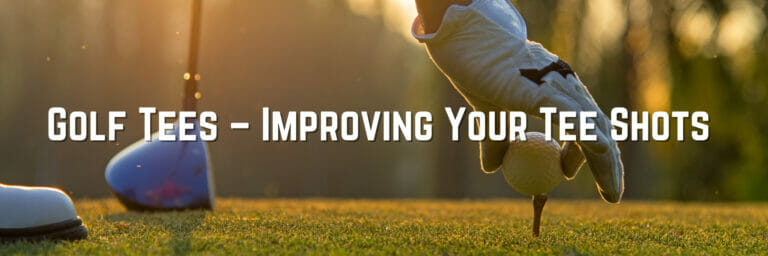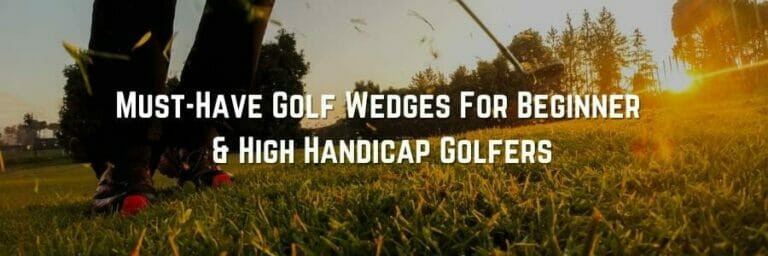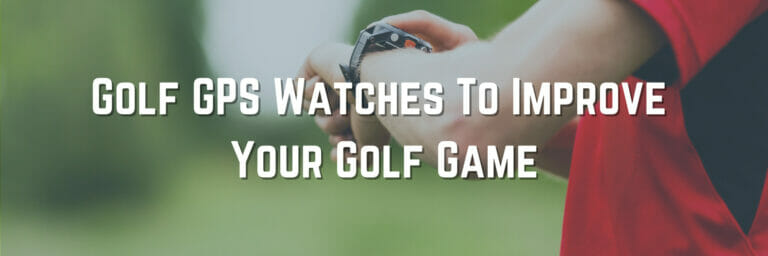A Complete Guide To Golf Balls For Beginner Golfers & High Handicappers

!!!!DISCLAIMER!!!! This site may contain Amazon & other affiliate links.
This means if you click on one of the product recommendation links, this site may receive a small commission. This is at no extra cost to you and may include exclusive discounts when possible. This helps support this site and allows us to keep making content like this. Thank you for your support!
Everything A Beginner Needs To Know About Golf Balls
You’ve probably heard the saying, “the only difference between a good golfer and a bad golfer is the balls they use.” In many ways, this is true. The balls you use can affect every aspect of your game, from your swing to your distance to your accuracy.
It is not just about the material it’s made from and the cover it has (although those are important). The golf ball you choose can also have an effect on how straight it flies, how much it spins on its way towards the hole (if at all), and ultimately how far you can hit each shot.
If you’ve ever walked into a store and wondered which ball to get, or looked at a range of balls in the store and thought, “which one is the best?” then this article will tell you what to look out for and what to avoid. It will tell you everything you need to know about the best golf ball for beginners.
Golf Ball Construction
There are five types of golf ball construction available, each specifically designed for a particular style of play.
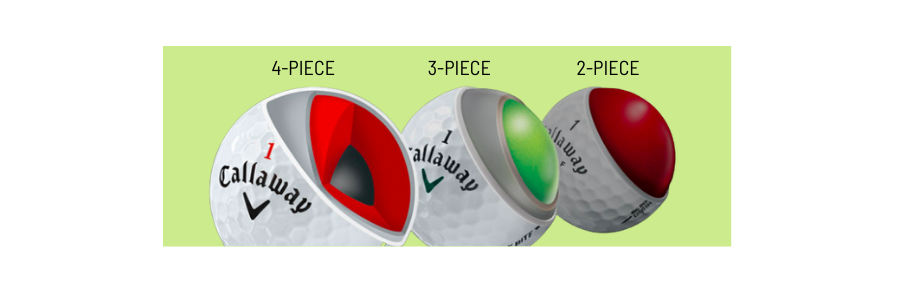
One Piece Golf Ball
The most common golf ball construction is one-piece. This type of golf ball has a solid core and is shelled with urethane covers. One-piece golf balls are best for beginners. They are popular among players of all skill levels for their durability and price. The balls have great performance for their price range.
If you are looking for something affordable to start with, or you’re just an occasional player and a little bit tight on budget, this is one great way to go. It’s also the most popular golf ball in the world, with around 90% of all balls being one piece.
Popular one-piece golf balls in this category include TaylorMade TP5 and Titleist DTSofter.
Two-Piece Golf Ball
Two-piece golf balls consist of a solid core and are shelled with urethane covers. An elastic polymer connects the layers in the middle, making the ball more flexible to give it a better feel off the driver and lower spin on wedges for better control.
Many golfers can enjoy the feel and control offered by a two-piece ball while finding the distance and durability of a one-piece ball better suited to their game. These balls are specially designed for players who want to have a bit more spin on their drives.
Two-piece balls are generally less expensive than three-piece balls and perform similarly. Two-piece golf balls include the Callaway ERC Dual Dimple, Wilson Duo, and Nike Tour Preferred.
Three-Piece Golf Ball
Three-piece balls contain a solid core surrounded by two layers of a material called mantle and cover. The mantle is the intermediate layer that has little or no contribution to the durability or spin of the ball. The cover is what contributes to the “feel” of the golf ball.
The cover must be softer than barrier materials such as balata and ionomer, but it can’t be too soft or affect distance and durability too much.
Three-piece golf balls are generally more expensive than two-piece ones but offer more control and feel on iron shots and short game situations.
Golfers who are looking for more control off the tee and a soft, responsive feel around greens will most likely like three-piece golf balls better than any other type of ball. Examples of three-piece balls include Nike RZN, Callaway Warbird, and Titleist Pro V1.
Four-Piece Golf Ball
Four-piece golf balls consist of a solid core and are shelled with mantle, cover, and rubber layers. The four-piece is the most popular type of golf ball on the market. It’s the most durable, spin-friendly ball that Golf Magazine has ever tested. It is also the only type of golf ball that provides all of the great show, feel, and performance you’d expect from a premium ball.
Four-piece balls are very popular among professional and mid-handicap golfers because they provide more distance off the driver while maintaining short game spin control to help make up for mistakes around greens. They are also preferred by many players because of their superior durability.
The four-piece golf ball construction gives these balls a soft feel, and they perform well around the green. Most four-piece golf balls are available in various price ranges to suit all golfers’ budgets. Best four-piece golf balls include Callaway HX Diablo, Titleist Pro V1x, and TaylorMade Penta.
Five-Piece Golf Ball
Five-piece balls are basically a solid core surrounded by four layers of a material called the mantle, cover, inner cover, and outer cover. The five-piece golf ball construction gives these balls a soft feel, and they perform well around the green.
The golf ball is generally more expensive than the four-piece golf balls, but many players who are looking for long-distance off the tee with exceptional short game control can still benefit from these premium quality balls. Best five-piece golf balls include TaylorMade TP5/TP5X, Callaway Speed Regime, TaylorMade Lethal.
Golf Ball Dimples
Dimples are the small rounded depressions on a golf ball that help reduce drag resistance and contribute to the lift-like effect. As the ball flies through the air, drag force opposes its motion—this force is proportional to the ball’s surface area and depends on its speed relative to the air. (Drag force increases with speed because it takes more momentum to get moving.)
Golf creates high-speed gas flow over a ball’s surface to limit this drag force, which means that the airflow must pass through many small “channels” or dimples.
Golf ball dimples are a necessary design feature to create a ball that flies far and is easy to control around the green. However, golfers’ opinions about dimples vary greatly—some golfers don’t like balls with dimples because they like a smoother hit, while others value the grip and control that is provided by dimpled balls. As a result, all but two major manufacturers produce both types of balls.
Golf Ball Compression
Compression is judged by feeling the golf ball. Soft balls are those with a compression of 80 or less, and hard balls range from 90 to 110. Soft balls give a greater distance than hard balls, but harder balls have a better backspin attribute on them.
Compression does not affect performance unless it is extremely low (below 80) or extremely high (above 110). Generally, golfers should choose a golf ball that has the same or slightly less than their normal driver clubhead speed rating because it will fly like their driver and enable them to gauge the right distance for shots that require accuracy rather than power.
Low Compression Golf Ball
Low-compression balls tend to be softer and compress more easily to assist beginners and higher handicap players with slower swing speeds to go farther.
High Compression Golf Ball
Higher-compression balls are harder and are used by players with better swing speeds so as to gain greater distance while at the same time gaining greater control.
Golf Ball Feel
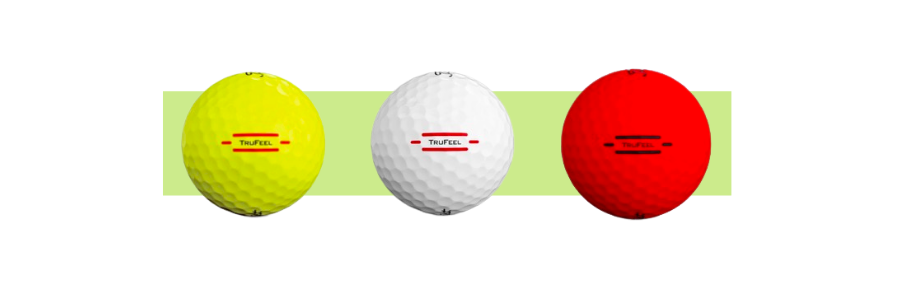
How a golf ball feels is an especially important factor for players who wish to use the same ball. On the one hand, a player may like the way a ball feels when hitting it off a tee but may not like it when putting.
Others may be able to feel a difference in feel between different dimple patterns. Similarly, individuals can sometimes tell the difference between balls made of different materials.
Soft Golf Balls
Soft balls have a softer cover, creating less backspin, less distance, and higher trajectory upon landing.
Medium Golf Balls
Medium balls have a balance of backspin and flight trajectory with a moderate distance off the tee.
Firm Golf Balls
Firm balls go the furthest with maximum backspin, making them ideal for longer courses with harder fairways. However, these balls require more club head speed to make them fly properly off the tee- especially if there is any wind being played into- so they are not recommended for beginners or those who have trouble controlling their shots.
Golf Ball Spin Rate
Spin is an important component in golf. Spin can be beneficial for some shots but detrimental for others. For example, a shot around a tree or bunker requires a backspin because the spin will help eliminate the ball from hitting the obstacle and getting stuck in it.
On the other hand, when hitting a pitch shot thin- meaning low and long- a higher launch with no backspin is desirable so that it carries through to the green without hitting any obstacles before landing on the green.
Incorporating a backspin on your ball’s flight path can be achieved by adjusting your swing speed, angle of approach to the ball during a strike, swing/club face direction when striking a ball, and firmness of the ball.
A lot of golf balls are spin-biased (meaning they are designed to create more backspin). The amount of backspin can be altered or changed. Various factors determine the amount of back spin created by a golf ball:
Spin on a golf ball is calculated in revolutions per minute (rpm)—the high the rate, the greater the spin. As spin increases, height decreases, and distance decreases. A higher launch must be achieved to get a good distance when using a ball with lots of spins; therefore, this type of ball tends to favor shorter hitters.
Low Spin: Spin rates below 3,000 rpm
These balls tend to decrease side spin on your shots, causing the ball to fly straighter and lower than you would expect. They are typically used by low handicap players. These balls generally have more control around the green but can be harder to keep in bounds as they lose their lift and will roll into a bunker, car, or water if they are not kept above the ground’s surface when struck.
Mid-Spin: Spin rates between 3,500 – 5,500 rpm
These balls tend to be used by mid-handicap players, whose spins fall in the middle of the spectrum. The ball might not travel as far as the high-spin ball but will give better control around and on the green.
They also tend to be a little easier to keep in bounds when struck below the surface of the ground. Simply put, these balls are ideal for mid-handicap players who want better control and higher distance than low-spin ones.
High Spin: Spin rates above 5,500 rpm
These balls are often used by higher handicap players since they help increase distance off the tee and have enough spin around the green to help with less than perfect shots. These balls have a high flight trajectory that will often skip and land softly on the green.
Many golf balls have several layers or sub-colors. These can affect the flight pattern of the ball and increase spin. The higher the number, the more layers of paint or sub-colors that are used to form that layer of the golf ball. Even numbered layers will often have a high spin rate, while odd numbered layers will have a low spin rate.
Usually, layers on a golf ball can be broken down into 3-5 sub-layers, each with its ownspin rate and trajectory.
Once players have determined which do matter most for them, they should look for a golf ball that performs in these areas based on their ability level and playing situation.
Brand Philosophy
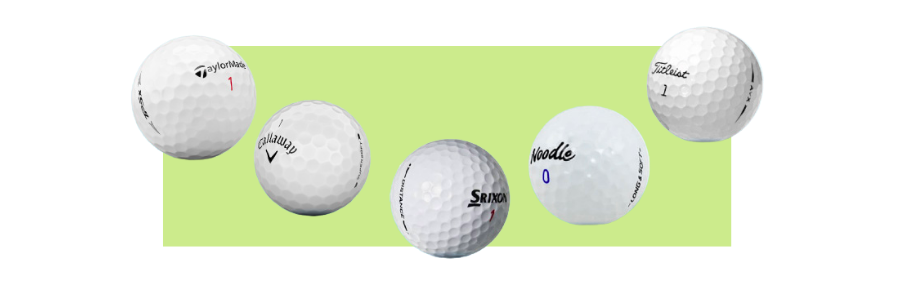
Various manufacturers make golf balls with unique characteristics and benefits. The main difference between manufacturers is the feel of their products and how they affect the flight path of a ball.
Some companies, like Titleist and Callaway, produce high-end premium balls that are designed to give a player better control around greens and more distance off the tee than other balls. These balls are preferred by mid-handicap or better players who want to avoid stray shots or penalties due to poor shot control. Titleist’s Pro V1 is one example of this type of ball.
Like Srixon and Wilson, other companies produce a wide range of golf balls to suit every player. These balls typically provide mid-level distance and spin characteristics that are suited for all skill levels.
Their products include both soft balls, which favor approach shots around the green, and hard balls for faster swing speeds that add distance off the tee. One example of this is Srixon’s Z Star ball.
Wilson’s Tour Spin line is designed with low spin rates to help golfers get more distance off the tee with their driver clubs. This ball is especially good for golfers that have higher handicaps or slower swing speeds.
So What Is The Best Golf Ball For Beginners?
When you first start playing golf, we don’t recommend purchasing a premium or quality golf ball just yet. Instead, buy a cheap ball that will help you work on your short game with the club and get the feel of your clubs. One-piece golf balls definitely fit the bill.
Make sure that the logo does not stick out too much on the ball, as it can interfere with your alignment with shots around the greens. Remember that golf ball fit is crucial once you have practiced and are ready to upgrade your golf ball.
So a soft golf ball would be perfect for this. It is important to find a ball with a compression, spin rate, and distance rating that suits your ability level and playing situation. So, in this case, low compression and low spin rate golf ball will be perfect for beginners.
Since there are so many different manufacturers of golf balls, it is important to research each one carefully before making a purchase. If you would like to try various brands out before making an investment in new golf balls, almost every driving range offers golf ball rentals for a small fee.
You can also ask around at your club or nearby pro shops for feedback on which brands of affordable balls best suit your needs. When you are ready, gradually move up to a better ball as your game improves.
To help new players find the best ball for their swing speed, skill level, and playing situation, Titleist has developed a simple guide to choosing the right ball. https://www.titleist.com/golf-ball-fitting-tool.
Using this guide will help beginner golfers choose a ball that will enhance their distance and control of their shots without breaking the bank. Are you getting bored with your golf game? Are you tired of shooting poor scores? If so, it is high time to start playing with a better ball.
